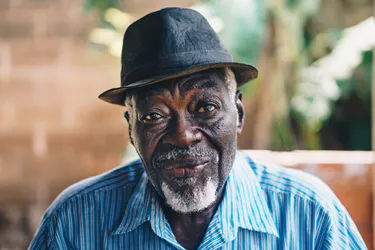'Being Bipolar' - a skewed impression
Charlotte Walker is a mental health activist, trainer and researcher. She won the Mark Hanson Award for Digital Media at the Mind Media Awards. Today she writes a guest blog about C4's 'Being Bipolar'
Charlotte blogs at https://purplepersuasion.wordpress.com/
At the beginning of the week people from the online bipolar community started asking me, “Are you going to watch that Channel 4? Programme?” Many were genuinely worried about the broadcast of Being Bipolar, presented by psychotherapist Philippa Perry. They feared the film would give a skewed impression of us and give friends and relatives false ideas about bipolar.
So how well did Being Bipolar represent us? I had issues within the first minute, with Perry telling us that “the number of people with bipolar has risen threefold in the last two decades.” Hang on: was that an increase in the number of people having bipolar? Or the number of people now recognised as having bipolar who would not have been diagnosed in the past? I also disliked the tone. “Who are these people?” asked Perry, as if we might be zoo animals or aliens.
We knew of course that Perry would have a different viewpoint to the medical model. “Too often,” she suggested, “we ask what’s wrong with someone, rather than what happened to them.” I don’t have a problem with this; it’s pretty well known people with severe mental illness have often experienced trauma. But Perry’s repeated probing about past experiences felt like she was asking a question to which she already had the answer. While I do have trauma in my background, her view that the majority of mental distress is a “learned set of reactions” felt very counterintuitive, given how much my symptom profile has shifted over time.
The filmmakers clearly wanted to show one participant with bipolar I, one with bipolar II and one with rapid cycling. But there were complicating factors that meant some behaviours might have other causes. Paul’s mania was heavily intertwined with drug use, whilst rapid-cycling Ashley had comorbid autistic spectrum issues. Even within the wide variation of bipolar symptoms, like was not being compared with like.
The idea of “formulation” – supporting someone to arrive at a story that helps them make sense of their distress – is common in psychological approaches. But it is supposed to be user led; the clinician facilitates. What we saw in Being Bipolar was Perry imposing her own formulations on participants. Maybe a high-flier like Paul might develop mania to create a space in which he felt himself the best at everything. Maybe bipolar II Sian had obsessional behaviours that were blocking out “troubled feelings”. Maybe Ashley’s past trauma was relieved again and again through mood cycling,
Having met the participants, Perry took on the issue of brain chemistry and drugs by talking to two psychiatrists. Only this was not a level playing field either. It pitted well-known academic, anti-medication psychiatrist Joanna Moncrieff, who has a large following and books to sell, against a general psychiatrist in an adult community team. Did I buy the practicing psychiatrist’s view that brain chemistry is the main factor in bipolar? No; it’s much more complex than that. Did I buy Moncrieff’s dismissive view of meds? In fact I found them quite insulting. In her view the best meds do is “work well in calming someone down and some of them also dampen down emotions.” “They don’t actually cure anything?” queried Perry, adding that this was a surprise (which seemed disingenuous, given her clear agenda). The possible benefits of medication – such as keeping people safe by “dampening” feelings like suicidality - were not explored and Sian’s belief that without her meds she would be dead was not treated seriously by Perry or Moncrieff.
Next Perry turned her attention to the genetic element, taking Sian to meet a “leading bipolar expert” to persuade her out of her belief that her condition was hereditary – because in this film, formulation was key, until it came to a service user’s own formulation involving meds or genes. Persuaded there might be more to bipolar than biology, Sian went for an initial assessment with a psychotherapist and emerged tearfully hopeful. Had the experience, asked Perry, been transformative? It seemed so and Sian was keen to continue. Perry stated that Sian now had “a choice” and that would mean she can move away from “being a slave to her emotions.”
As feared, Being Bipolar misrepresented debates about bipolar in a number of ways. I have never in 20 years as a service user heard a psychiatrist suggest there is a cure for bipolar. To imply that pharmaceutical companies and doctors present themselves as “curing” bipolar is deeply, deeply misleading, while suggesting that through therapy people can learn to have a “choice” in how they experience their bipolar is both dangerously close to victim-blaming. It also sets psychotherapy up as almost a cure itself, glossing over the fact that the vast majority of people will need drug therapy as an adjunct to talking therapy. In fact the risks of not treating bipolar with drugs were not mentioned at all, despite the fact that one in three people with bipolar will make an attempt on their life.
Nor have I met anyone who believes bipolar is purely a matter of genes. But it is very wrong to dismiss the impact of genetic inheritance, as this film did. 1:10 is actually a fairly high risk – the same as the risk of developing inherited breast cancer. Again Sian’s concerns about her children were dismissed. Oddly, having been obsessed with the participant’s past environments, there was no discussion of environmental factors that could trigger that bipolar in someone with an inherited risk, presumably because Sian’s sons were out of infancy, the period of Perry’s interest. The influences of street drugs and major life events did not get a look in.
Fewer and fewer people hold the belief that chemistry is the sole cause of bipolar, yet denying that brain chemistry plays any part is nonsensical. Our brains work on chemistry; emotions are chemical events. The non-pharmacological changes recommended by doctors (exercise, improved diet, improved sleep, relaxation exercises) all change brain chemistry. Several times Perry refers to mood changes as being like a “switch” and that is to me one of the hallmarks of bipolar, the baffling mood switch which is nothing to do with what is happening around you and feels like pure chemistry.
Most frustrating was that there was no acknowledgement of the lived reality of services. I agree working with a psychotherapist can indeed be transformative - if you can pay for it. It is an incredibly scarce resource in the NHS, with waiting lists of up to two years even for the tiny minority assessed as suitable. Addressing Ashley’s social isolation seemed to lead to improvements in his functioning, but day or drop-in centres have been cut to the bone. In absence of therapy, in the absence of social support, what are psychiatrists and GPs and service users to do but make use of medication?
I’m lucky. I hope that through my blog and openness my friends and family will know better than to buy into such a skewed programme, and won’t demand to know why I take useless drugs. Those with an already sceptical network may now just find that it just got a little harder to get their treatment plan taken seriously.


Information and support
When you’re living with a mental health problem, or supporting someone who is, having access to the right information - about a condition, treatment options, or practical issues - is vital. Visit our information pages to find out more.
Share your story with others
Blogs and stories can show that people with mental health problems are cared about, understood and listened to. We can use it to challenge the status quo and change attitudes.

















